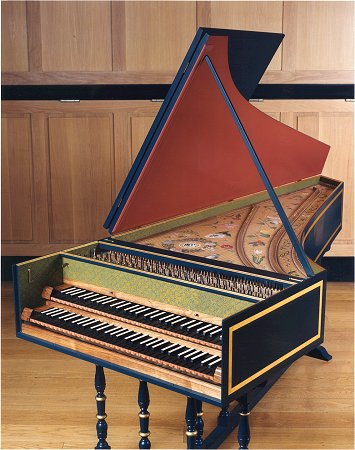December 16, 2006
Gratuitous Musickal Posting (TM) - We Wants It! Division

Trevor Pinnock, one of my very favorite Baroque conductors and whose birthday it happens to be today, has a guide for purchasing a harpsichord. Part One is a survey of the various historical types. Part Two is a discourse on what to look for when choosing one:
Unless you will be performing frequent solo recitals or must play the Goldberg Variations, a single manual harpsichord will be suitable. Italian and Flemish models are frequently promoted by builders, many which are assembled from kits, though many Italians instruments made have a dry and hard sound. An instrument of this type is well suited for much of the literature and is ideal for continuo playing. Unless you will be playing a fair amount of Scarlatti, stick to an instrument with a small compass with a short octave or broken octave in the bass.Flemish instruments are very adaptable to a variety of harpsichord music. A copy of a Ruckers with 8+4, 2x8 or 2x8+4 would be both an excellent ensemble as well as solo instrument. Copies of 18th century single manual harpsichords are also available based on designs of Dulcken and Kirckman.
For two manual harpsichords, a Flemish/French traditional design after Blanchet would be a suitable choice for music of the first half of the 18th century. Copies of mid 18th century Flemish harpsichords after Dulcken are better suited to Bach than to French music. Interest is gaining in 17th and early 18th century instruments while moving away from decedent, overbearing French instruments. Seventeenth century French and 18th century German have been neglected and it is hoped that makers take further interest in these.
[Insert sound of slavering here.] It is one of my long term goals - after I win the lottery or knock off the Missus for the insurance money - to someday have a harpsichord of my own.
Posted by Robert at December 16, 2006 08:26 AM | TrackBack

 Image courtesy of the lovely and talented
Image courtesy of the lovely and talented 